It is very rare to find a unique rock art image repeated on ceramics or textiles from contemporaneous cultures. This study discusses the parallel between the unique petroglyph of a deliberately rotated bird image at Cochineros, a rock art site along the Río Mala, and compares the bird with similar images on ceramics and textiles of a surprisingly large coastal area.
By Maarten van Hoek
*
*
The Origin of the Cochineros Bird
Río Mala, Peru
Maarten van Hoek
Introduction
It is well known – and demonstrated in countless publications about Andean iconographies – that Andean imagery contains innumerable types of images, both abstract as well as biomorphic in again numerous variations. Yet in general there exists a discrepancy between rock art imagery on one side and the imagery on ceramics, textiles, ceremonial and domestic objects and architectural art on the other side. This discrepancy may be explained that rock art sites often are found quite some distance from ceremonial sites, like temple complexes, and large domestic sites. At rock art sites the environmental context is different and the manufacturer is different. The distance between the rock art site and the controlling ceremonial site, where the authorities resided, offered more freedom in selecting specific (even rebellious) rock art motifs and ignoring other motifs. For instance, the stepped pattern (see Figure 4A) is abundantly depicted on ceramics, textiles, architectural art etc., but is hardly ever seen in Andean rock art. Yet, the division is not strict at all. Motifs and biomorphs depicted on ceramics, textiles etc. occasionally occur as rock art images.
This paper discusses one specific biomorphic petroglyph that my wife Elles and I recorded in 2008 at Cochineros, a major rock art site in the valley of the Río Mala, 80 km SE of Lima City centre, Peru. It concerns a most unusually shaped petroglyph of a much stylised bird. Despite its uniqueness in Andean rock art, it proved to have several interesting links with textile art and ceramic art of coastal cultures, revealing its possible roots.
*
The Cochineros Bird
The petroglyph that I would like to discuss is found on Boulder COC-001 at Cochineros, which is located at the extreme south end of the 360 m long boulder field, 40 m west of the Río Mala, about 29 km inland (for locations of the sites mentioned in the text see Figure 1) and at an altitude of 550 m, only 10 m above the valley floor (all distances and altitudes based on Google Earth). Boulder COC-001 is enormous (it measures about 5 or 6 m in length) and has numerous often undulating decorated panels. The boulder was confusingly registered as “Piedra 6 and 12” by Núñez Jiménez, the Cuban rock art researcher who was the first to make a record of the site (1986: Fig. 1464 to 1466). Altogether we recorded 14 smooth, water-worn boulders with often numerous petroglyphs (Van Hoek 2010), some with biomorphic petroglyphs (most likely birds) that – regarding the pecked triangles and other features – are more or less related to the Cochineros Bird petroglyph on Boulder COC-001. Those related petroglyphs appear on Boulders COC-003; COC-005; COC-007; COC-011 and COC-014 (Boulder COC-014 was first recorded by us in 2008; see Van Hoek 2010: Fig. 9). All the birds are relatively less patinated. Some of those related bird petroglyphs have an “awkwardly” upward pointing beak, for instance on Boulders COC-003, COC-007 and COC-014. Although there are some more bird petroglyphs at Cochineros with (pecked) triangular elements, only the petroglyph on Boulder COC-001 (framed in Figure 2) is referred to as the Cochineros Bird in this study.
Figure 1. Maps showing the locations of the sites mentioned in the text (© Maarten van Hoek). Click any illustration to see an enlargement,
The Cochineros Bird petroglyph is found at the extreme SW end of Boulder COC-001 at a rather inaccessible location and moreover in a most “unusual” (subjective term) rotated position on a steeply sloping surface (framed in Figure 2). The bird measures about 26 cm across and is fully pecked, except for the large circular eye (not having an internal dot, as suggested by Núñez Jiménez [1986: Fig. 1465]). The much stylised body is composed of five triangles that are arranged in a V-shape (Figure 2). It is possible that those triangles were first outlined and later pecked in (note the outlined triangles [earlier trials?] left of the Cochineros Bird in Figure 2). The Cochineros Bird has no legs, but instead a curled (feline or monkey?) “tail” and a distinct, long open beak (which is straight). Also those two elements may have been added at a later stage (but possibly by the same hand).
Figure 2. Boulder COC-001 at Cochineros, Río Mala, Peru, showing the Cochineros Bird. The detail photo on the right has been rotated by me. Photographs © by Maarten van Hoek.
*
The Possible Origins
Having seen this petroglyph in 2008, I often wondered why the Cochineros Bird petroglyph had been manufactured in a most “unusual” rotated position and also why its body was “strangely” composed of rows of large pecked triangles. Up to September 2022 I could not find any exact parallel, neither in textiles or ceramics produced by the prehistoric communities of the Peruvian coast, nor in Andean rock art imagery. The only “parallels” that I know of are a few petroglyphs of birds (three shown in Figure 3) with comparable triangular elements (representing a head or a tail) that we recorded at the rock art site of Yonán in the Jequetepeque Valley of northern Peru (650 km NW of Cochineros; 56 km inland and – importantly – in Chimú territory; see Figure 1 for location), but they all are still too different to be related to the Cochineros imagery. Therefore, for a long time it was unknown to me which culture manufactured the Cochineros Bird petroglyph (as well as the other comparable ornitomorphic petroglyphs with triangular elements at Cochineros).
Figure 3. Panel YON-023 at Yonán, Río Jequetepeque, Peru, with three Chimú-Style (?) bird petroglyphs. Photograph © by Maarten van Hoek.
I would like to emphasise that – especially because I am not at all an expert on Andean ceramics or textiles – I have to trust the (often very limited and incomplete) information accompanying the illustrations that I found on the internet (hence the frequent use of “purported”). A textile found in a burial at one place, may well have been manufactured at a much distant spot. So, one has to be cautious to make absolute statements. Also the (often much) different names for one culture and the (often much) differing geographical extents and chronologies of Andean cultures are often confusing. They are only meant as a general guidance in this study.
Unfortunately, Núñez Jiménez does not provide any information regarding the culture(s) that manufactured the petroglyphs at Cochineros (1986: 39), neither for the nearby (600 m downstream) rock art site of Retama (1986: 31). Only for the single decorated boulder of Calango (14 km downstream in Mala) Núñez Jiménez very tentatively suggests a ¿Pre-Chavín? origin, which, however, I very much question, as there is not a single recognisable Formative Period image on that much weathered boulder (the era lasting from about 3000 B.C. to A.D. 0).
Much in sharp chronological contrast with the Formative Period suggestion by Núñez Jiménez, Pinedo et al. (2008: 241) assign much of the petroglyphs to the period of the Inca occupation of the area (A.D. 1470 to 1532), although I must emphasise here that – in my opinion – the petroglyphs in Mala have not been manufactured by the Incas themselves. Locals and/or regional travellers did. However, even though Pinedo et al. (2008) admit that it is impossible to date all of the graphically much differing and much differently patinated petroglyphs at Cochineros, they did not put forward any explanation and/or dating for especially the unique Cochineros Bird petroglyph on Boulder COC-001.
Yet I am convinced that at least the biomorphic petroglyphs at Cochineros that are composed of pecked triangles (and most likely other petroglyphs as well) are older than the Inca Period. To prove my point, I would first like to offer the interested reader an analogy and a possible explanation concerning the unusual rotated position of the bird petroglyph on Boulder COC-001. In an undated manuscript about the Chancay Culture by Itzel Paulina Ortiz Ortega is a small photograph of a fragment of a painted piece of cotton said to be of Chancay origin (Ortiz Ortega n.d.: [unnumbered illustrations] page 11-first image).
Although the caption reads: “Tela de algodón pintada. eclecticadesigns.pe 18-7-2011”, no further information about this specific piece could be traced on the internet. Additionally, she also illustrated a gauze and openwork embroidery (gasas y bordados calados) image depicting a bird (Ortiz Ortega n.d.: 7-first image; see also a textile in the Amano Museo of Lima). Both textiles showed birds looking like the Cochineros Bird. It now proved that there are several instances where similar stylised birds appear on Chancay textiles and ceramics, often in rotated position, especially when interlocking. Importantly, two of the four panels of the Chancay textile illustrated by Ortiz Ortega (n.d.: 11-first image) featured images of laterally depicted birds, one panel of which is illustrated in Figure 4A (note the stepped pattern). All birds on this panel are almost identical to the Cochineros Bird petroglyph, having bodies composed of five triangles that are arranged in a V-shape. Only the curled “tail” is missing.
Figure 4. A: Detail from a purported Chancay textile. B: Detail from a textile from Tomb AR01-CF1 at Chilca. Drawings © by Maarten van Hoek, based on illustrations by A: Itzel Paulina Ortiz Ortega (n.d.: 11) and B: by Del Carpio Perla (2021: Fig. 170).
However, what is even more important is that the birds have been depicted in several rotated positions (as if flying?). It thus proves that a fixed “natural” (horizontal) position for biomorphic images is not mandatory in Chancay iconography. Therefore, the Cochineros Bird could well be an expression of the Chancay Culture, which lasted from A.D. 1100 to 1470 and thus flourished earlier than the Inca Period. A convincing example depicted on a Chancay ceramic is seen in Figure 6B. However, the Chancay Culture – with its heartland about 135 km to the NW of Cochineros (see the maps of Figure 1) – allegedly did not reach as far as the Mala Valley (although it cannot be ruled out that a Chancay textile and/or a textile or even a person with a mind-image travelled up the Mala Valley).
Yet, there may even be a more distant parallel. Stylised biomorphs (partially) composed of triangular elements in more or less the same style – including birds in rotated position – are also known in textiles from the Chimú Culture (which once stretched along almost the entire north coast of Peru, including the contemporaneous Chancay territory). One purported Chimú “textile” (actually made out of the feathers of different birds) even shows four images of a double-bird, which offers a striking (yet different) parallel with the Cochineros Bird. (Figure 5A). It is therefore possible (and even likely) that the Chimú influenced the Chancay Culture, and possibly also several cultures further south, as will be demonstrated further on.
Figure 5. A and B: Details from purported Chimú feather-textiles. Drawings © by Maarten van Hoek, based on illustrations by A: Wilo Vargas (Facebook) and B: The Metropolitan Museum of Art (URL).
This influence is possibly evidenced by the fact that also textiles of the Chincha Culture often show similarly stylised birds, some even with a curled “tail”, thus resembling the Cochineros Bird in this respect (Figure 6A). In the Museo Regional of the town of Ica are several textiles with images of birds that are definitely related to the Cochineros Bird and there is more (convincing?) evidence from the Chincha Culture, which will be discussed further on in this study. However, the Chincha heartland is found some 120 km further SE of Cochineros (see Figure 1).
Figure 6. A: Detail from a purported Chincha textile. B: Detail from a purported Chancay ceramic (now in the Museo de America, Madrid). Drawings © by Maarten van Hoek; A: based on a photograph by an unknown author (textile now in the Museo Larco, Lima); B: on a photograph by Rafael Gomez (Flickr).
Therefore I searched the internet for a candidate that was found even closer to Cochineros, which I found in a publication by Martín del Carpio Perla (2021), who described an excavation of an important burial site. It was located immediately along the Pan Americana near the town of Chilca, 32 km due west of Cochineros and only 20 km NW of the mouth of the Río Mala (see Figure 1). Importantly, Del Carpio Perla included a photograph of a textile that showed stylised birds that are almost similar to the Cochineros Bird (2021: 184; Figs 170 and 174). This textile was found in Tomb AR01-CF1 at Chilca (see detail in Figure 4B). The textiles excavated at Chilca are often ascribed to the Chilca Culture, but it is very likely that graphical influence came from the (more dominant?) Ychsma Culture further north along the coast, or even from the Chimú Culture (see Figure 1).
During the Late Intermediate Period and Late Horizon the Ychsma Culture (A.D. 1100 to 1469) occupied the lower and middle sections of the Lurín and – somewhat later – the Rímac drainages, south and east of Lima. Its powerful religious centre was the famous coastal oracle of Pachacamac where several Ychsma Style textiles – yet also textiles, ceramics and objects from distant cultures – were found. Regarding the layout of the Cochineros Bird, the bird images on the Ychsma textiles also proved to be related to the Chancay Culture further north and – to a lesser extent – to the Chincha Culture to the south. At Pachacamac several textiles with images of birds have been recovered that are similar to the bird imagery from the Chancay, Chilca and Chincha Cultures and to the Cochineros Bird. Again, those birds are much stylised and often comprised triangular and/or V-shaped forms and elements. Although it is held that the Ychsma Culture did not reach as far as Chilca, “there are researchers who maintain that the Ychsma Culture even reached the valley of the river Mala” (freely translated and adapted from information found at Wikipedia).
*
Questioning the Inca Origin
Based on the observations made above, it is now clear that there are several serious candidates for the origin of the Cochineros Bird. In my opinion the Cochineros Bird image is definitely not a local invention, but was manufactured on the boulder based on a mind-image, or (more likely) derived from an image on a textile or on a ceramic, which was transported from the coast into the Andean highlands, using an Inca road that most likely existed long before the Incas arrived in the Mala Valley.
However, in order to further complicate the search for the origin of the Cochineros Bird, I found a photograph on the internet of a purported Inca ceramic that features at least two images of the Cochineros Bird, both with long, curved beaks, though (Figure 7). This ceramic is now (writing October 2022) stored at the Museo Regional in Ica. Unfortunately, its exact provenance is unknown (to me) and thus it may in fact come from a large area in Ica and beyond.
Figure 7. Detail from a purported Inca ceramic. Drawing © by Maarten van Hoek, based on an illustration posted by the Museo Regional at Ica.
But does this mean that this bird image is an Inca invention? This seems highly unlikely. In my opinion it only means that the Inca occasionally duplicated the image of the Cochineros Bird from images on artefacts made by earlier cultures. Summarising, the more serious candidates for the origin of the Cochineros Bird presented in this study are (from north to south along the coast; a stretch of about 1100 km): the Chimú Culture, the Chancay Culture, the Ychsma Culture, the Chilca Culture and the Chincha Culture, but definitely not the Highland Inca Culture (Cuzco being located about 500 km ESE from Cochineros across the Andes; see Figure 1).
Yet archaeologist Henry Tantaleán (2010) claims that the artefacts that have been depicted on the boulders at Cochineros (like ceremonial knives or Tumis; axes; star-shaped clubs or porras (made of stone or metal); and pins or tupus – all metal objects) were only known in the Mala Valley from the moment the Incas arrived in the area around A.D. 1470. According to Tantaleán this seems to indicate that many of the petroglyphs depicting those objects (and others) are also of Inca origin. However, I seriously doubt this, as the argumentation by Tantaleán is conflicting with other, more probable scenarios. I will use the Tumi (an easily portable object) as an example to demonstrate that another scenario is more likely, resulting in an earlier date for many petroglyphs at Cochineros.
A Tumi is a ceremonial knife with a semi-circular blade that is known since the third century B.C., and – for instance – it often features in the iconography of the Páracas Culture (Van Hoek 2013: Fig. 162; 2014a: Fig. 11). Much later Tumis often appear in the iconographies of the Moche Culture (A.D. 100 to 700) and the Chimú Culture (A.D. 800 to 1470). Also several petroglyphs of Tumis in northern Peru seem to confirm this chronology (Van Hoek 2014b).
It is also certain that the Chancay Culture (definitely influenced by Chimú) knew of (and probably also used) the Tumi, as is evidenced by – for instance – the purported Chancay ceramic (stored in The Walters Art Museum, USA) depicting a large Chimú-Style bird with a Tumi emerging from the head (interestingly, a similar bird appears on a purported Chincha textile in the Museo Regional of the town of Ica). This Chancay bird (and the Staff-God looking deity below) is/are also surrounded by a large number of small Tumis (not bird footprints in my opinion; see my detailed observations regarding this issue in Van Hoek 2017, discussing the numerous Tumi petroglyphs in this part of Arequipa). Therefore, the (image of the) Tumi could easily have diffused through the Mala Valley depicted on a (Chancay) ceramic and/or a (Chancay) textile or even as actual Tumis.
In addition, some of the stylised birds depicted on Chancay textiles and also on pottery – for instance the aforementioned Chancay ceramic – look very much similar to the sculptured birds on the adobe walls of Chan Chan, the capital of the Chimú, just NW of Trujillo. This seems to indicate that the Cochineros Bird has its roots in Chimú iconography (see also the Chimú ceramic in the Museu Nacional at Rio de Janeiro, Brazil), and that – at a certain time – the icon diffused southwards along the Pacific Coast.
There is another serious indication pointing to a Chimú origin. It concerns a spectacular feather textile of Late Chimú origin (15th to 16th century) that is – importantly – said – however – to be from the Chincha Valley. The feather textile bears two small profile birds with zigzag bodies and wings that are facing each other (one shown in Figure 5B). The textile was probably made by Chimú artists after the Inca had conquered their territory on the north coast, which forced skilled Chimú artists to migrate to the south.
*
Conclusions
To conclude, it is almost certain that the Cochineros Bird has intentionally been manufactured in an inverted position and intentionally on a rather steep part of Boulder COC-001. When it would have been executed on a horizontal part, it would be pointless for me to discuss the position of the petroglyph. This “unusual” yet premeditated position reflects the conventional custom of the several coastal cultures to play with symmetry, interlocking, inverting, rotating, mirroring and many other graphical variations, not only including abstract motifs and other biomorphs, but especially regarding the many much stylised bird images in ancient textiles.
In my mind it is also (almost) certain that the deepest roots of the Cochineros Bird can be found in Chimú Culture, and it is very likely that specific Chimú imagery migrated (on for instance textiles and ceramics) along the coast, influencing the Chancay, Ychsma, Chilca and Chincha Cultures. It is now logical to suggest that certain elements of the coastal iconographies travelled inland, also reaching the already existing rock art site of Cochineros, where some Chimú-Chancay-Ychsma-Chilca-Chincha-Style birds (as well as a possible Chimú-Style feline petroglyph – also on Boulder COC-001) and numerous Tumi petroglyphs were manufactured.
However, it is completely unknown whether the actual manufacturer of the Cochineros Bird was someone from the Chimú Culture, the Chancay Culture, the Ychsma Culture, the Chilca Culture or from the Chincha Culture. But in my opinion it definitely was not someone from the Inca Culture. It was not even a person who had been influenced by the Inca Culture. Finally, in view of the numerous textiles (and to a lesser extent ceramics) depicting birds in the same style as the Cochineros Bird, it is remarkable that no more images of the Cochineros Bird have been reported in the rock art of this part of coastal Peru. Until now the Cochineros Bird petroglyph is still unique (disregarding the related ornitomorphic petroglyphs at Cochineros, as well as the more or less comparable bird petroglyphs at Yonán [for location see Figure 1]).
*
Acknowledgements
I am grateful to my wife Elles who assisted me during our surveys at Cochineros and Yonán, and of course for her ongoing support at home.
*
References
Del Carpio Perla, M. 2021. Más que junco y totora. Los pobladores prehispánicos de Chilca. Cálidda, Lima.
Núñez Jiménez, A. 1986. Petroglifos del Perú. Panorama mundial del arte rupestre. 2da. Ed. PNUD-UNESCO – Proyecto Regional de Patrimonio Cultural y Desarrollo, La Habana.
Ortiz Ortega, I. P. n.d. Cultura Chancay. PDF.
Pinedo, O., H. Tantaleán and N. Espino. 2008. Calango Quilcacuna: Los petroglifos del valle medio de Mala (Cañete). In: Arqueologia de la costa centro sur peruana (eds. Pinedo & Tantaleán). Pp. 231 – 266. Avqi Ediciones.
Tantaleán, H, and O. Pinedo. 2005. Los petroglifos de Calango. Arkeomala: Proyecto de investigaciones arqueológicas en el Valle de Mala, Lima – Perú.
Tantaleán, H. 2010. Los petroglifos del Valle de Mala, costa centro sur peruana: una explicación materialista-histórica. In: Rupestreweb.
Van Hoek, M. 2010. Additional petroglyph rocks at Cochineros, Valle de Mala, Perú. In: Rupestreweb.
Van Hoek, M. 2013. The Carcancha and the Apu. Rock Art in the Death Valley of the Andes. Oisterwijk, The Netherlands. Book only available at ResearchGate.
Van Hoek, M. 2014a. 2014. The shaman, the lord and the warrior: anthropomorphic petroglyphs at Chillihuay, Arequipa, Peru. In: Rupestreweb.
Van Hoek, M. 2014b. The Tumi-Bearer of Pampa Grande, Lambayeque, Peru. Adoranten -2013. pp. 97 – 109. Underslös, Sweden.
Van Hoek, M. 2017. Petroglifos en Yarabamba, Arequipa, Perú: ¿Aplacandos los Apus? In: TRACCE – On-Line Rock Art Bulletin, Italy.
Cover photo (© by Maarten van Hoek): Boulder COC-001 viewed from the north, looking towards the minor rock art site of Retama in the distance. The drawing above is based on an illustration of a textile (provenance unknown) by an author who is unknown to me.
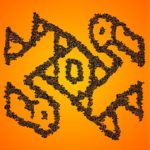
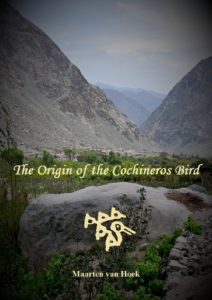
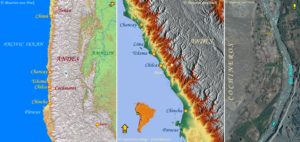
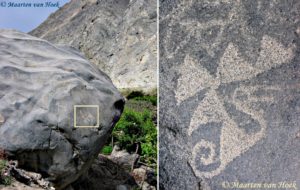
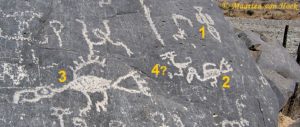
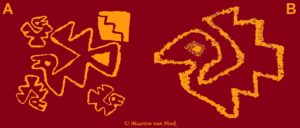
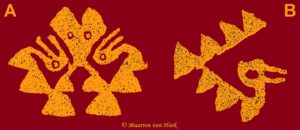
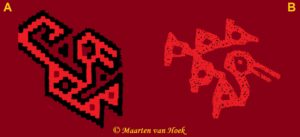
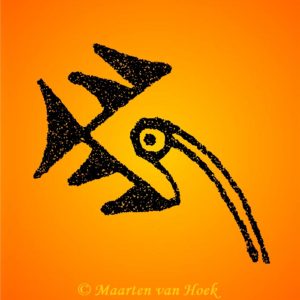
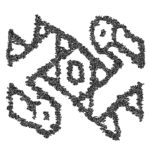
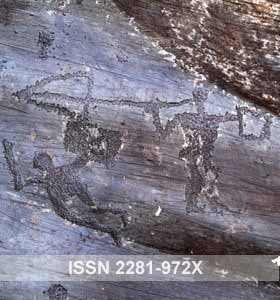













Leave a Reply